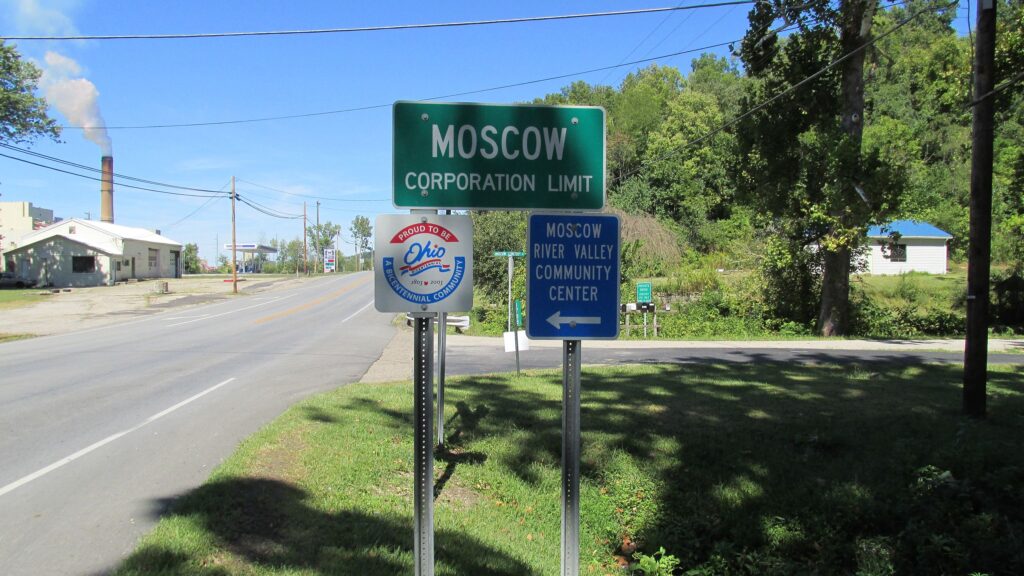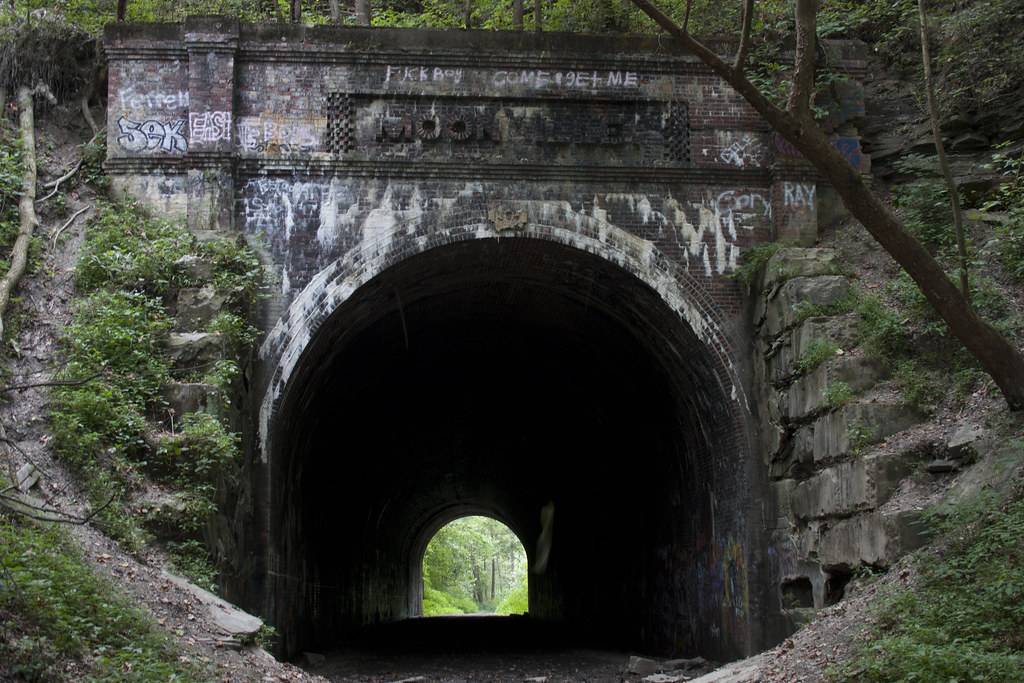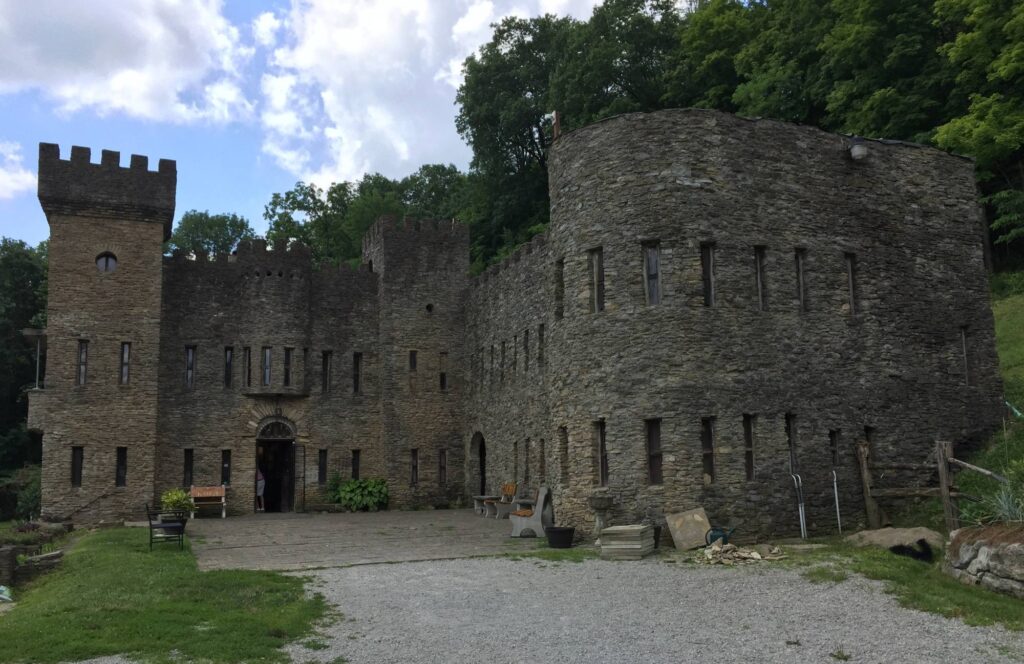Imagine yourself at some fancy party, perhaps something like the famed Met Gala but somewhere in Ohio … and someone comes up to you and asks, “Hey, complete stranger I’ve never met before, have you ever driven from Moscow to Russia?” What are you going to think?
Chances are, if you’re anything like me, your first thought will be along the lines of “What is this person smoking?” or “Everyone knows Moscow is the capital of Russia, so if you’re in Moscow you’re already in Russia so how can you drive there if you’re already there?” or “Hey, bartender, I think this guy has had enough to drink, maybe it’s time to call him a cab?”
And what does this have to do with a blog that’s all about Ohio?
Well, let’s just say that if you’re in Ohio, you can easily drive from Moscow to Russia … and depending on traffic, the journey should take you approximately two hours (not counting the time you stop for lunch because the kids are in the back seat complaining they’re hungry).
Moscow, Ohio
Sometimes, Ohio likes to be weird. (I say that as the utmost compliment.) I say this because Ohio has had not one, not two, but three towns with “Moscow” in its name. In Licking County, there is what little remains of a ghost town that had once been named Moscow, which had been laid out in 1830 but eventually died out. There is also an unincorporated community in Coshocton County called New Moscow. And then there is the one the focus of this post – Moscow, Ohio, a village in Clermont County, Ohio, a relatively short distance southeast from Cincinnati, down the Ohio River.
Platted in 1816, the village is believe to have gotten its name from early French settlers who had fought in Napoleon’s siege of Moscow before immigrating to the new country.
Moscow has earned its place on the Ohio Map (and in the history books) in a couple of interesting ways. Point Pleasant, Ohio (not to be confused with Point Pleasant, West Virginia, home of the Mothmen) is just a couple of short miles down the road. That town was the birthplace of the man who is the wrong answer to the question of “Who is buried in Grant’s tomb”. (The correct answer is Nobody, since technically Ulysses S. Grant and his wife were entombed there, not buried.)
The more direct route to history takes us back to a series of events that started on October 30, 1842.
At some point in the middle of the night, a group of Pro-Slavery Kentuckians broke into the house of Fanny Wigglesworth and her husband. They had both been residents of Ohio for sixteen years and were known to be active and well-liked members of the Moscow community. The problem was that Fanny had been born into slavery. She had been freed by her owner, however when that lady died and her estate was being settled, the woman’s estate passed into the hands of two gentlemen, William Moore and William Middleton, who rejected Fanny’s freedom and wanted a return of their “property”. So, they helped organize a small possy to cross the river, break into the Wigglesworth house, and take their slave back. And that’s what they did.
The community in Moscow was enraged over this act and it fell to a young man named Robert Fee to solve it. (It should probably be noted here that the Fee family had a long history among the abolitionist movement in Kentucky and Ohio.) When Robert Fee discovered the slave, her husband and her children were put up for auction in Kentucky, Fee went and put a down payment on the family, returning to Ohio to collect the rest of the needed funds. He returned shortly after, only to discover that the family had been relocated to Missouri. Fee then traveled west to locate the family, but he was unable to do so. Her keepers kept moving them from place to place and their whereabouts after this have been so far lost to history. Fee was attacked by an angry mob and forced out of town empty handed, but with a warrant for his arrest should he ever set foot in the state again.
It was this act that propelled Robert Fee even deeper into the anti-slavery abolitionist cause and also helped to expand The Underground Railroad, making Moscow a major stop. Fee’s brothers lived directly across the river and could send coded messages via hanging lanterns when the Ohio River was safe to cross. Fee would also house escaped slaves either on part of the family property or through a network of safehouses he helped to create.
From Moscow to Russia
If you were to go North on Route 52 (which runs through Moscow), take the shortcut on Nine MIle Road and make your way to I-275, which will take you to I-75. From there, head north all the way to Piqua. From there, it’s just a short jaunt on Highway 66 before you arrive in the town of Russia.
Russia, Ohio
Before I begin here, let me clue you in to something that may (or may not) cause the locals to give you the “stink eye”. This village is not pronounced the same way the similar-spelled country located just past Europe is … Here in Ohio we seem to prefer to say it “ROO-shee”.
The earliest settlers in this region were mainly the French-speaking Swiss, many of whom were veterans under Napeoleon who fought in the French invasion of Russia, which is where the town got its name. It had first been platted by Lewis Phillips in 1853, who went on to build the town’s first residence (for himself) and the town’s first grocery store (which he worked). Before long, as residents began to build their own homes in town, a dry goods store was opened, but the main focus of the town appeared to be its several sawmills.
The following year (1854) a log church was built for the Catholic population and was dedicated to Saint Remigius (otherwise known as The Patron Saint of France). It didn’t take long for the population to outgrow the original church, so a second larger church was built several years later, and then in 1892 a third, even larger church was built. This may explain why some people referred to Russia as The Land of the Cross Shaped Churches.
In some ways, it seems history has passed this town by as little of any historial significance seems to have happened there. And maybe that’s why the residents enjoy living there. It appears to be a nice, quiet place made up of hard working residents just going about their daily lives. There isn’t much of interest for the historically minded traveler, except maybe a pint at the local bar or a spot of food at one of the town’s few restaurants.
Dig Deeper…
- Moscow, Ohio – Wikipedia
- Village of Moscow, Ohio – Official Website
- Russia, Ohio – Wikipedia
- Russia, Ohio – Official Website



